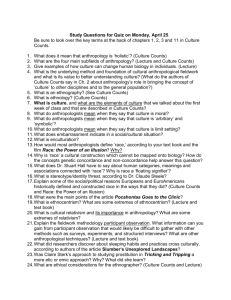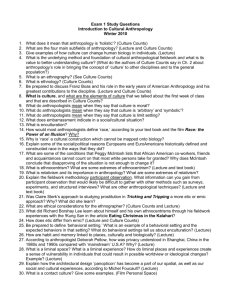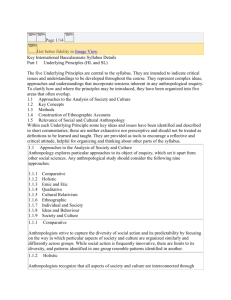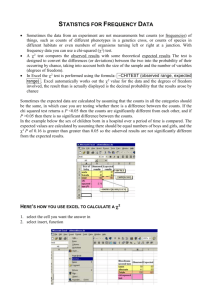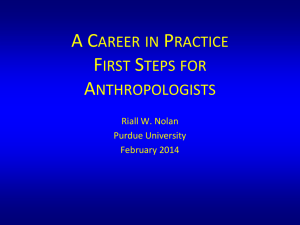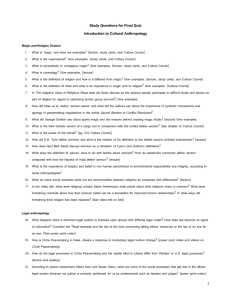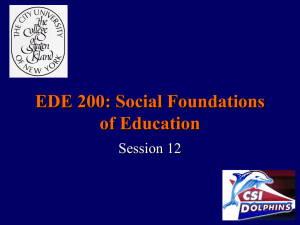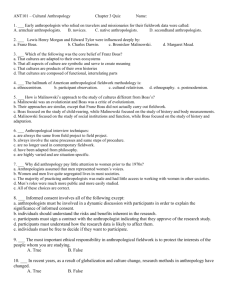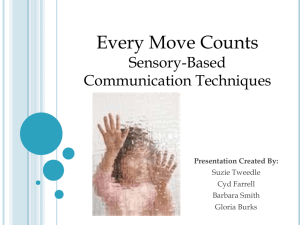Study Questions for Quiz on Tuesday, Jan. 18 Be sure to look over
advertisement
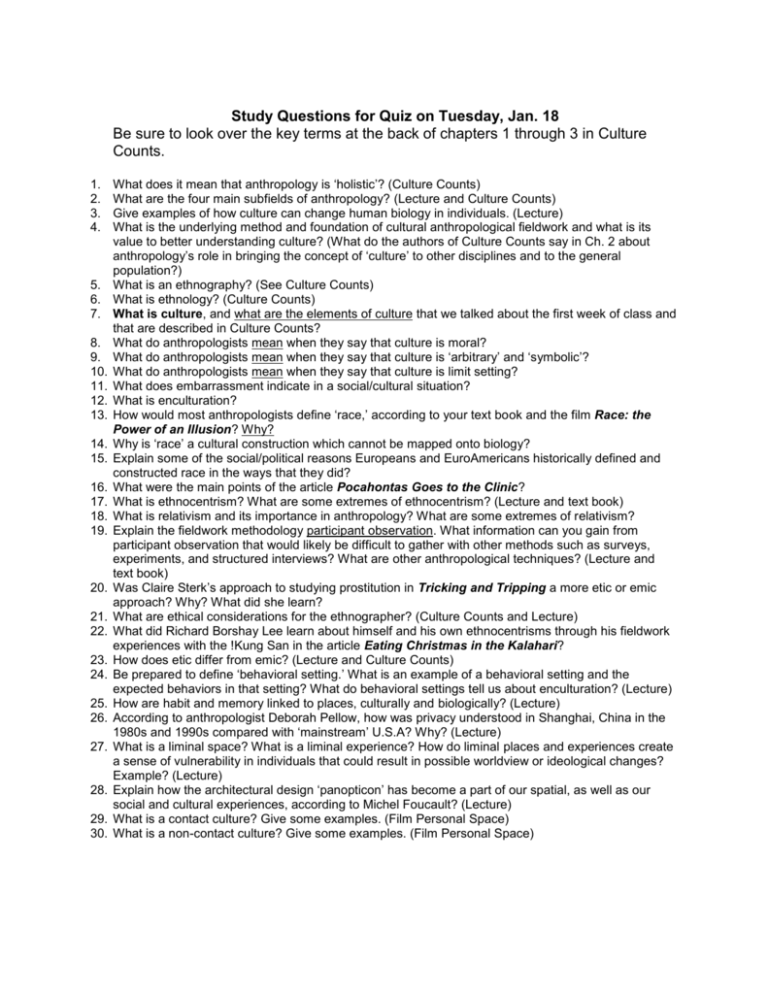
Study Questions for Quiz on Tuesday, Jan. 18 Be sure to look over the key terms at the back of chapters 1 through 3 in Culture Counts. 1. 2. 3. 4. 5. 6. 7. 8. 9. 10. 11. 12. 13. 14. 15. 16. 17. 18. 19. 20. 21. 22. 23. 24. 25. 26. 27. 28. 29. 30. What does it mean that anthropology is ‘holistic’? (Culture Counts) What are the four main subfields of anthropology? (Lecture and Culture Counts) Give examples of how culture can change human biology in individuals. (Lecture) What is the underlying method and foundation of cultural anthropological fieldwork and what is its value to better understanding culture? (What do the authors of Culture Counts say in Ch. 2 about anthropology’s role in bringing the concept of ‘culture’ to other disciplines and to the general population?) What is an ethnography? (See Culture Counts) What is ethnology? (Culture Counts) What is culture, and what are the elements of culture that we talked about the first week of class and that are described in Culture Counts? What do anthropologists mean when they say that culture is moral? What do anthropologists mean when they say that culture is ‘arbitrary’ and ‘symbolic’? What do anthropologists mean when they say that culture is limit setting? What does embarrassment indicate in a social/cultural situation? What is enculturation? How would most anthropologists define ‘race,’ according to your text book and the film Race: the Power of an Illusion? Why? Why is ‘race’ a cultural construction which cannot be mapped onto biology? Explain some of the social/political reasons Europeans and EuroAmericans historically defined and constructed race in the ways that they did? What were the main points of the article Pocahontas Goes to the Clinic? What is ethnocentrism? What are some extremes of ethnocentrism? (Lecture and text book) What is relativism and its importance in anthropology? What are some extremes of relativism? Explain the fieldwork methodology participant observation. What information can you gain from participant observation that would likely be difficult to gather with other methods such as surveys, experiments, and structured interviews? What are other anthropological techniques? (Lecture and text book) Was Claire Sterk’s approach to studying prostitution in Tricking and Tripping a more etic or emic approach? Why? What did she learn? What are ethical considerations for the ethnographer? (Culture Counts and Lecture) What did Richard Borshay Lee learn about himself and his own ethnocentrisms through his fieldwork experiences with the !Kung San in the article Eating Christmas in the Kalahari? How does etic differ from emic? (Lecture and Culture Counts) Be prepared to define ‘behavioral setting.’ What is an example of a behavioral setting and the expected behaviors in that setting? What do behavioral settings tell us about enculturation? (Lecture) How are habit and memory linked to places, culturally and biologically? (Lecture) According to anthropologist Deborah Pellow, how was privacy understood in Shanghai, China in the 1980s and 1990s compared with ‘mainstream’ U.S.A? Why? (Lecture) What is a liminal space? What is a liminal experience? How do liminal places and experiences create a sense of vulnerability in individuals that could result in possible worldview or ideological changes? Example? (Lecture) Explain how the architectural design ‘panopticon’ has become a part of our spatial, as well as our social and cultural experiences, according to Michel Foucault? (Lecture) What is a contact culture? Give some examples. (Film Personal Space) What is a non-contact culture? Give some examples. (Film Personal Space)
